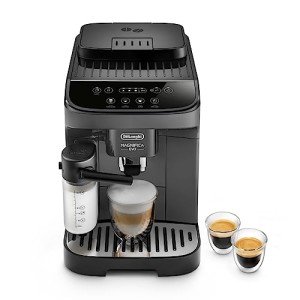Bean To Cup Espresso Coffee Machine: The Ultimate Guide
Over the last few years, the coffee culture has actually experienced a significant change, with the increase of home brewing devices offering convenience and quality similar to café offerings. Amongst these devices, the Bean to Cup Espresso Coffee Machine stands apart as a favorite among coffee lovers and casual drinkers alike. This thorough guide explores what these machines are, how they work, the benefits they use, and factors to consider when selecting the best one.
What is a Bean to Cup Espresso Coffee Machine?
A Bean to Cup Espresso Coffee Machine is an advanced coffee developing device that grinds coffee beans fresh for each cup, automating the entire espresso-making procedure. These machines typically include integrated grinders, integrated milk frothers, and precise developing innovation, permitting users to develop premium espressos, lattes, coffees, and more, all from the convenience of their homes. The convenience, matched with the rich and robust flavors produced, has actually made these machines progressively popular.
How Does It Work?
The fundamental operation of a Bean to Cup Espresso Coffee Machine can be broken down into a number of crucial actions:
Bean Grinding
- The machine grinds whole coffee beans immediately before brewing, guaranteeing optimum freshness and flavor retention.
Brewing
- Ground coffee is packed into a filter, and hot water is forced through the coffee premises at high pressure, which is important for producing espresso.
Frothing (Optional)
- Many models consist of a steam wand or milk frother for preparing frothed milk for lattes and cappuccinos.
Serving
- The last phase involves dispensing the brewed coffee into a cup, often with programmable features for customization.
Advantages of Bean to Cup Espresso Machines
Buying a Bean to Cup Espresso Coffee Machine provides many advantages, adding to its growing popularity.
| Benefit | Description |
|---|---|
| Convenience | One-touch operation lessens the time and effort required to prepare coffee. |
| Quality | Newly ground beans lead to a richer, more flavorful drink compared to pre-ground alternatives. |
| Customization | Users can change settings to suit individual choices, including grind size, coffee strength, and milk froth levels. |
| Cost-efficient | Although the preliminary investment might be high, savings on coffee buy from cafés can be significant gradually. |
| Flexibility | The ability to brew numerous coffee types, from espresso to cappuccino, broadens the machine's appeal. |
Secret Features to Look For
When selecting a Bean to Cup Espresso Coffee Machine, different functions can influence the purchase choice. Below are vital aspects to consider:
Grinder Type
- Burr grinders are preferred over blade mills for their consistent grind size.
Brewing Pressure
- Look for machines that provide at least 15 bars of pressure for optimal espresso extraction.
Milk Frother
- Choose in between manual steam wands or automatic milk frothers based upon choices for milk texture and foam.
Interface
- An easy to use control board with programmable settings enhances the general experience.
Size and Design
- Consider the counter top space readily available and pick a design that matches your cooking area visual appeals.
Upkeep Options
- Some machines provide automatic cleaning cycles, which can save effort and time in maintenance.
Popular Bean to Cup Espresso Machines
Selecting a machine that fits one's needs can be difficult. Below is a list of popular designs, known for their dependability and efficiency.
| Model | Key Features | Rate Range |
|---|---|---|
| De'Longhi Magnifica ESAM3300 | Adjustable coffee strength, compact design | ₤ 550 - ₤ 700 |
| Breville Barista Touch | Touchscreen controls, integrated cone-shaped burr mill | ₤ 800 - ₤ 1,150 |
| Saeco PicoBaristo | Automatic milk frother, 12 coffee specialties | ₤ 900 - ₤ 1,300 |
| Jura E8 | Pulse Extraction Process, Alexa Compatible | ₤ 1,800 - ₤ 2,500 |
| Gaggia Anima | Easy to clean, programmable settings | ₤ 500 - ₤ 800 |
Upkeep Tips
Keeping a Bean to Cup Espresso Coffee Machine in excellent condition is important for guaranteeing durability and ideal efficiency. Here are some upkeep pointers:
- Regular Cleaning: Clean the machine's parts regularly, including the drip tray, coffee grounds container, and water tank.
- Descaling: Perform descaling every few months based upon water firmness and usage to prevent mineral accumulation.
- Modification Water Filter: If the machine has a water filtering system, alter the filter as advised.
- Check Seals and Gaskets: Check for wear and tear to prevent leakages and make sure appropriate pressure during developing.
FAQs
1. Are Bean to Cup Espresso Machines simple to use?Yes, a lot of models are created for user benefit with basic control panels and one-touch operation. 2. Can I use pre-ground coffee in these machines?While Best Bean To Cup Coffee Machine With Automatic Milk Frother permit using pre-ground coffee, the main benefit depends on using whole beans for fresh grinding. 3. How often need to I clean my Bean to Cup machine?Regular upkeep is crucial; daily cleansing of removable parts and descaling every 2-3 months are normally suggested. 4. What is the average
life-span of a Bean to Cup Espresso Coffee Machine?With correct maintenance, these machines can last anywhere from 5 to 15 years based on usage quality
. 5. Are these machines worth the investment?Though they can be pricey, the convenience, quality coffee production, and long-lasting savings make them a worthwhile investment for many coffee lovers. Purchasing a Bean to Cup
Espresso Coffee Machine can substantially boost the home
coffee experience. By offering newly brewed, high-quality coffee, these machines deal with the growing demand for café-style drinks in the comfort of one's cooking area. With various options on the marketplace, understanding features and personal preferences will assist in picking the ideal machine to fit any coffee enthusiast's requirements.

